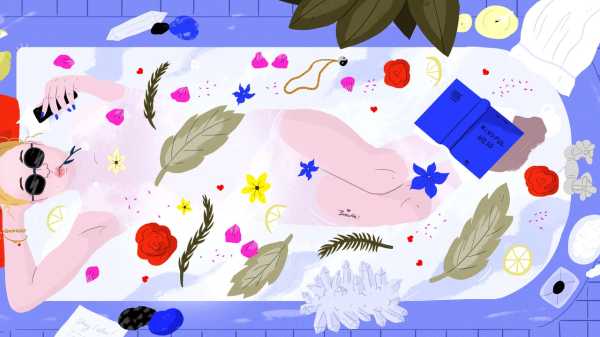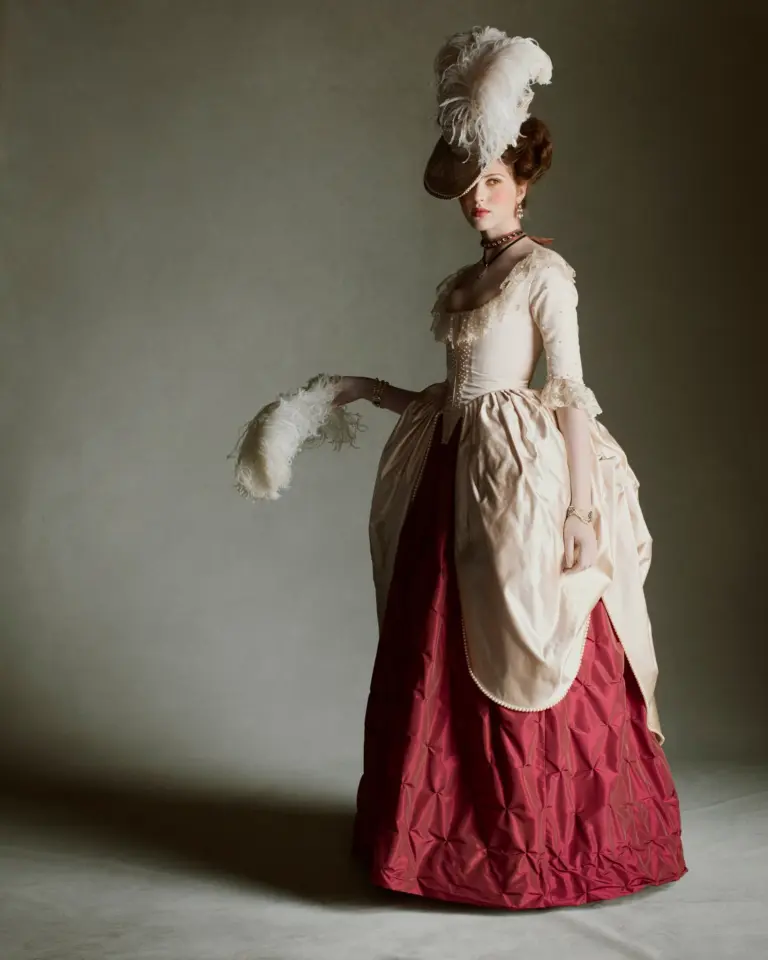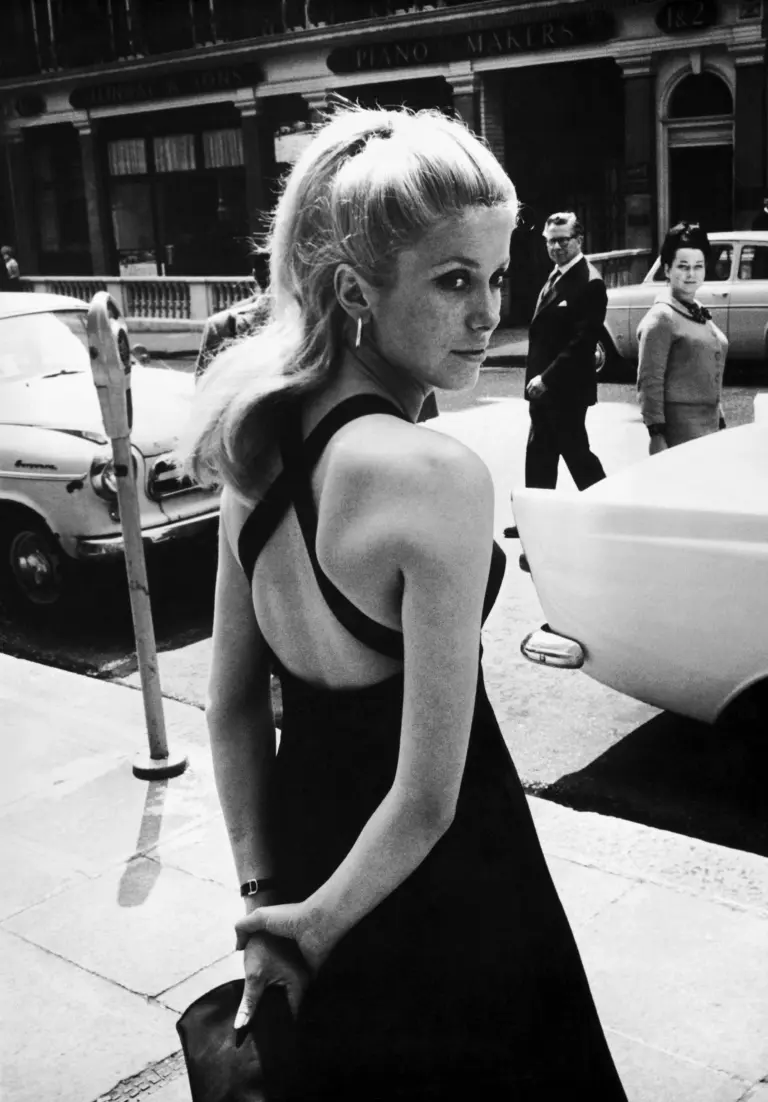
Save this storySave this storySave this storySave this story
For the average home dweller, taking a bath used to be a private endeavor: fill a giant porcelain bowl with warm water, strip naked, submerge your corporeal form, rinse, repeat. The only people whose bath times were made public were babies, Liberace, and Hollywood starlets. (A favorite: Jayne Mansfield gabbing on her vintage telephone in her heart-shaped tub in her furry pink bathroom, in a 1960 issue of Life.) But, oh, how bath times have changed. In an era of wellness trends fuelled by social media, when everyone is practicing competitive self-care, the bathtub has become another theatre set, an opportunity to perform one’s life style for all to see. Thanks to Instagram, and also to sites such as Into the Gloss and The Cut, which obsessively detail individual beauty regimens, I now know more than I ever thought possible about the bath-time habits of strangers.
For instance: Mariah Carey bathes in cold milk. Gwenyth Paltrow likes to wind down every evening in a bath of magnesium salts. Lin-Manuel Miranda bathes for exactly fifteen minutes, with a timer set to alert him when to get out. Eva Chen, the head of fashion partnerships for Instagram, renovated her bathroom so that her tub would be nearly a part of her bedroom. (Goodbye, open kitchen. Hello, open bathroom.) Emily Weiss, the C.E.O. of the makeup brand Glossier, takes a forty-five-minute bath almost every night, with scalding water and two full pounds of Epsom salts, the better to sweat—it’s “a workout without moving.” The model and influencer Summer Dawn Miller bathes in a crumbling old tub in her East Village apartment—and douses herself with a full bottle of hydrogen peroxide as she soaks. She shared this regimen as part of a recent “bath content” campaign with the pricey personal-care brand Necessaire. After people on Twitter began to question the health benefits of marinating in a disinfectant soup, the tip promptly disappeared from the beauty Web site that published it. (A representative from the site, Violet Grey, told me that it “takes a voyeuristic view of a subject’s beauty routine” but does “not endorse or guarantee” it.)
Peroxide or no peroxide, in the new bathing landscape, plain old Mr. Bubble no longer cuts it. As with most “wellness” trends, capitalism has rushed in to fill a gaping need that wasn’t there before. There are GOOP soaks for thirty-five dollars a bag and holi bath (mostly coconut milk) for fifty-eight dollars. There is Dream Bath Elixir and Moonenergy bath teas, and, courtesy of the cult-popular hot-yoga studio Y7, a post-Vinyasa CBD soak. In October, Fur, a high-end brand that makes products for the pubic area, will release a thirty-four-dollar tin of “bath drops” that burst in hot water and are meant to soothe the nether regions. Bath bombs—the baseball-size chunks of baking soda, citric acid, food coloring, and fragrance—now come stuffed with pop rocks, glitter, and activated charcoal that turns the bathwater pitch black. If you’re curious, you can watch dozens of videos of them dissolving on YouTube.
With the rise of public-facing bath time comes the rise of bathfluencers. Deborah Hanekamp, a thirty-six-year-old based in Brooklyn, is one. Trained as a shaman in South America, Hanekamp now runs a series of exclusive Medicine Readings in SoHo, each of which ends with her prescribing a bathing recipe—for instance, a pink bath made out of Himalayan salt, rose petals, rosemary and rose oils, and a chunk of rose quartz dropped into the tub. On Instagram, she often provides her seventy-thousand-plus followers with photos of her own “ritual baths,” which she shoots from above, before getting in, while standing on the edge of her tub. A forthcoming volume from William Morrow will collect her recipes, like a cookbook of soups for sitting in. “I like to make baths with açaí powder, and coconut milk, that creates this beautiful purplish water that makes the skin feel amazing,” Hanekamp told me. “Once I put turmeric in the bath, and that took hours to clean off my skin.” After her baths, she says, she likes to take the leftover pulp of ingredients outside and “offer them to a tree.” Among her latest inventions: an aura-clearing bath for rescue dogs.
Who am I to judge? My adult bath time began in my mid-twenties, in a dingy tub in an apartment on the Lower East Side, and I quickly became hooked. Around midnight every evening, I would scrub the prewar porcelain with vinegar and lemon juice and baking soda until it sparkled (as much as prewar porcelain can) and I would marinate in the steamy water for an hour, reading a mass-market paperback by candlelight. I’d leave my phone in my room, afraid of ruining it with pruny fingers. It was an Esther Greenwood approach to bathing—a baptism for the secular, anxious adult. I would go in skittery and overwhelmed, and emerge pink and peaceful, leaving all the grime of the city to circle the drain.
I have now been taking nightly baths for more than a decade—when searching for my current apartment, a deep tub was a key requirement—but the ritual feels less solitary than it once did. I still read plenty in the tub, but just as often I bring my laptop into the bathroom and balance it precariously on the edge of the toilet; I’ve streamed countless TV shows while deep-conditioning. My phone is usually with me, too. I tweet from the bath, send e-mails, and edit Google Docs, including a draft of this piece. (For calls, I even bought a pink plug-in handset, but it’s grown obsolete: iPhones are now waterproof, as are the new Amazon Kindles.) The tub has become a social space, an entertainment center, a wetter WeWork. Take enough baths and accrue enough social-media followers and you might find that you’re a bathfluencer, too. On Twitter, I’ve shared my entire tub routine, including my penchant for bath snacks (clementines, popsicles, smoothies) and, as an occasional splurge, Chanel bubble bath. On Instagram, I’ve posted various iterations of the standard bath-time selfie: bare feet poking out from the bubbles, resting on the silver tap.
Hanekamp, the ritual-bath guru, told me that she thinks baths have taken off in recent years because there’s a low barrier to entry: almost everyone has a tub. “A lot of what is out there in the wellness world can feel inaccessible,” she said. “A bath doesn’t feel too far out.” Baths are simple, but, in my experience, their effects can be profound. No matter if you bathe au natural or turn your water into a bouillabaisse, unplug or don’t, what makes a bath worthwhile are the small efforts that go into it. Let the water run, adjust the temperature, babysit the level. Move gracefully, with care, on the way in and out, lest you slip and break a bone. We are constantly bathed in content, steeping in the lives of others. But a person in the tub is someone who has slowed down long enough to stew for a few minutes with themselves.
Sourse: newyorker.com







